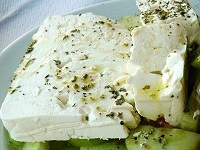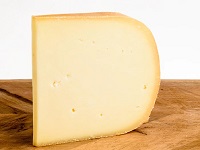Chardonnay (Italy)
Chardonnay is cultivated in many italian regions.
The best areas (in the North) produce light bodied unoaked Chardonnays.
Unoaked Chardonnay Flavors
Citrus and Green Apple flavors are typical for Unoaked Chardonnay. Notes of Minerals, but less "Flinty" than Chablis.
Lemon |
Lime |
Apple |
Minerals |
Unoaked Chardonnay Profile
Unoaked Chardonnay is light, dry, and crispy:
| SUGAR: | Dry (3 g/l) |
| BODY: | Light |
| FRUIT: | Low |
| ACIDITY: | Medium - High |
| ALCOHOL: | 12-13% ABV |
| Serving temperature: 8-10°C (46-50°F) | |
Unoaked Chardonnay Food Pairing
Chablis pairs best with Seafood, Fried Fish, and Fried Chicken.
Aperitif |
Oysters |
Shrimps |
Seafood |
Fish |
Chicken |
Fries |
Soft Cheese |
Excellent Pairings
Oysters. Clams. Shrimps.
Plain Fish. Sea Bass.
Fried Fish. French Fries.
Fish and Chips.
French Specialities
Snails or Prawns with Garlic.
Fried Chicken with French Fries.
The Ideal Glass for Unoaked Chardonnay
A Riesling Glass has a tall and narrow bowl to emphasize the aromas of the wine.

|
The shape also helps balance the high acidity often found in Unoaked Chardonnay.
The Riesling glass is perfect for any bone dry wines with high acidity like Chablis, Chenin Blanc, Picpoul and Vinho Verde. |
Unoaked Chardonnay Cheese Pairing
Unoaked Chardonnay is known for its light, crisp, and sometimes slightly fruity profile. It pairs well with a variety of cheeses.
Opt for cheeses with moderate saltiness and creaminess to balance the wine's acidity.
You can also add fresh fruits (grapes, apples, pears), nuts (almonds, walnuts), or a light drizzle of honey to enhance the pairing.
Fresh and Mild Cheeses
The tanginess of a Goat Cheese (Chèvre) will complements the subtle
fruit notes of Unoaked Chardonnay.
Ricotta is especially good if served with a drizzle of honey or fresh fruits.
Soft Cheeses
The creamy texture and mild flavors of a Brie work beautifully with Unoaked Chardonnay.
Camembert is similar to Brie but with slightly more earthiness.
The creamy qualities of a Neufchâtel can also make a good match.
Semi-Soft Cheeses
A lightly aged Gouda can add a complementary tang to Unoaked Chardonnay.
A nutty and sweet Gruyère can enhance the subtile flavors of Unoaked Chardonnay.
If You Like Unoaked Chardonnay
You Will Also Like:
The Chardonnay Grape

Chardonnay, the world's most popular white wine grape, was born in the Burgundy region of France.
It thrives in a range of climates, from cool to warm, each imparting distinct characteristics to the wine.
In cooler regions, Chardonnay exhibits flavors of green apple, pear, and citrus, accompanied by high acidity and a crisp finish.
Warmer climates bring out richer, more tropical fruit notes like pineapple, mango, and peach, often with a fuller body.
Chardonnay's profile can be further influenced by winemaking techniques.
Oak aging introduces flavors of vanilla, butter, and toast, adding complexity and a creamy texture.
Stainless steel fermentation preserves its bright, fruit-forward nature.
Chardonnay in Italy
Italian Chardonnay is typical lean and crisp. Unoaked Chardonnay can be found in Friuli, Trentino and Alto Adige.
Chardonnay, Pinot Noir, and Pinot Blanc are the main grapes permitted in the famous italian Franciacorta.
Early Italian wine production in Südtirol (Trentino-Alto Adige), often confused Chardonnay with Pinot Blanc. Pinot Blanc was called "Weissburgunder" (White Burgundy) and Chardonnay was called "Gelber Weissburgunder" (Golden White Burgundy).
In the late 20th century, Italy started to produce pure Chardonnay, and in 1984, Chardonnay was granted its first DOC (Denominazione di origine controllata) in Alto Adige.
Most Chardonnay is planted in the north, but it can also be found as south as Sicily.
The north areas produce a light bodied unoaked Chardonnays with noticeable acidity and flavors of citrus, green apple, and pear.
High Quality areas / regions:
- Trentino-Alto Adige
- Veneto
- Friuli-Venezia-Giulia
- Valle d'Aosta
In Lombardia and Trentino-Alto Adige Chardonnay is used for high quality Sparkling Wines (Franciacorta and Trento DOC).







